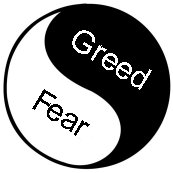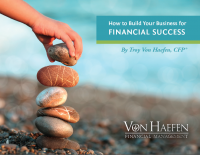
This question has been one frequently asked by my clients and friends lately. What do we do now that the market is perched at a record high? Do we buy into this rally, or do we sell out of it? This exposes the two emotions that can lead to failure with investing: fear and greed.
Greed
I’m amazed how we tend to forget the pain of 2000-2002 and 2008-2009. While we sit at record highs, the pains of yesterday seem to be a distant memory. Greed is now peeking its ugly head around the corner once again. I am hearing some discussions from average investors stating they want to buy a stock a friend turned them on to.
The thought of picking a winning stock and doubling your money is intoxicating for some. Wanting the best bang for the buck, the most return on investment, and doing the best you can are all certainly understandable. But, putting your future at risk by over indulging in the market because a friend or a talking head on the TV says “this rally has legs” is not a wise move.
Fear
At the other side of the spectrum is fear. Some folks are still scarred from the pain the market inflicted over the last 13 or so years. I have seen many folks who are fearful to invest because the market is just too “risky.” This path can also lead to financial disaster.
Staying out of the market can also be painful over the long term. Of course, we sometimes have money sitting in cash for short periods of time as we wait to put it to work. That is okay, but having large amounts of cash sitting idle for extended periods can certainly be a financial pitfall.
What to do?
While fear and greed fall at the edges of our investment psychology, balance lands us right in the middle and proves the answer we need for overall portfolio health. Developing a portfolio that can handle the three economic environments our economy can produce (Prosperous, Inflationary, and Deflationary) is the ticket.
The keystone to investment health is understanding how much risk is appropriate. Not how much risk your stomach can handle (the typical broker based risk profile), but how much risk is appropriate for your situation based on endogenous (specific to you) factors. Unfortunately, many folks end up with portfolio allocations based on risk factors determined from exogenous (outside) factors. These factors include things like market conditions, outside information (investment tips from friends and talking heads), and other economic factors. These outside factors are usually issues we can’t control.
The path to financial success is one led by controlling the things you can control (spending, savings, and managing taxes). Trying to time the market or an individual stock is very difficult and very risky. This points us back to the comprehensive planning approach. We should continue to plan and do the things we normally do: contribute to retirement accounts, maintain tax efficiency, and keep the big picture in mind.
I have no idea what the market will do today, tomorrow, or the rest of the year. Anyone who tells you otherwise is speculating. Our job is to maintain a disciplined approach to investing based on endogenous factors and not fall prey to fear and greed.

